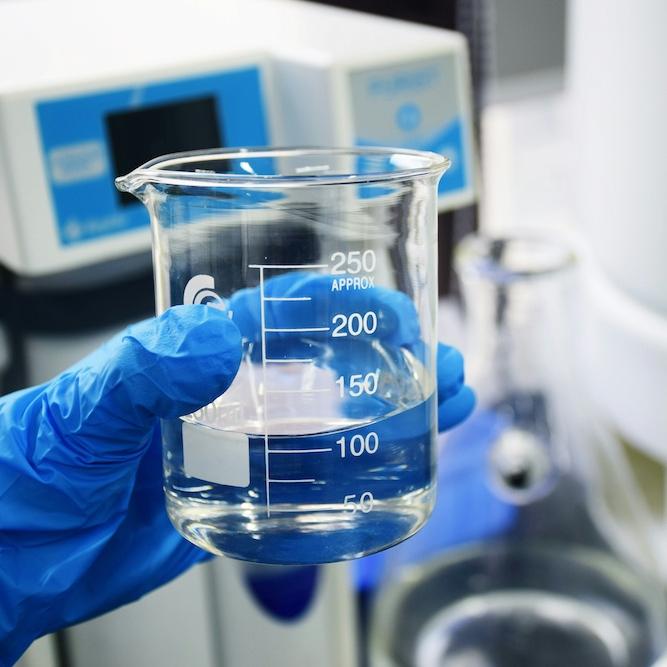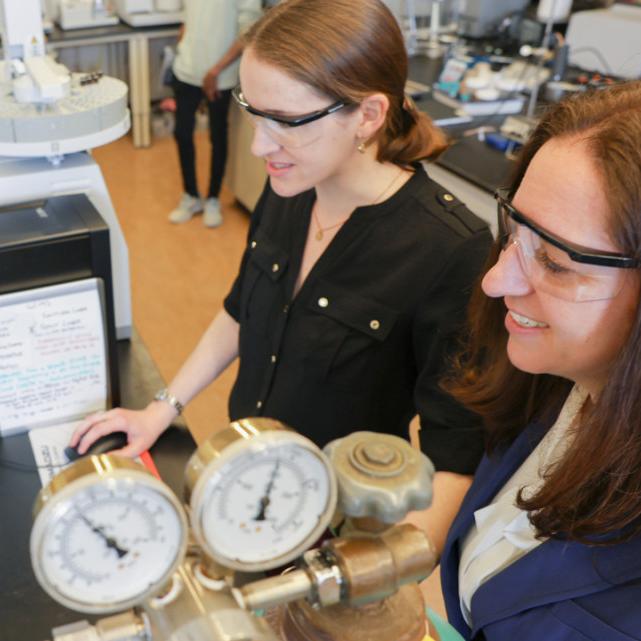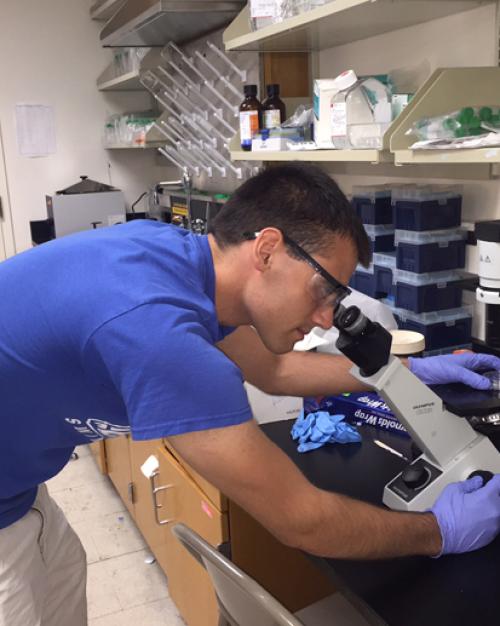Michael Disare ’17 spent the summer as one of five undergrad researchers in Cornell’s Aye Lab, working with methods that are completely novel.
Disare and his colleagues at the lab work on studying signaling pathways in cells, and how specific molecules, like oxidants, affect those pathways.
“It’s the crossroads between chemistry and biology,” he says. “It’s almost like using chemistry as a tool for studying biology.”
The methods Disare used were developed in the lab of Yimon Aye, an assistant professor of chemistry, and aren’t happening anywhere else.
This summer, he was tasked with a “high-risk, high-reward” project, Aye said, where he explored new techniques and methods with little guidance.
“Michael has the right combination of intellect, talent, energy, self-discipline, and is gifted with a high level of organization skills, commendable sense of responsibility and attention to details,” Aye said.
Signaling pathways are important, Disare said, because they allow cells to sense their environment and then react to that environment. Signaling pathways can help cells get rid of a toxic state, or even become a disease.
“They might accidentally tell a cell you should develop into a cancer cell,” Disare said.
This kind of research could lead to better drugs or further our understanding of cancer. But it’s still brand new and every day researchers make novel discoveries, a fact Disare said is an important part of the process.
“It’s one thing to do an organic chemistry lab [course]. It’s a different thing to work with organic chemistry in a lab,” he said “They’re different experiences…Honestly, the way you learn this stuff is through experience. If you don’t actually spend the time working with it, you can’t really learn these techniques.”
Aye agrees.
“Many of these training benefits are not always easily integrated through classroom teaching either in lecture courses or lab courses,” Aye said of the undergraduate research she fosters. “Undergrads make up about 50 percent of my lab —they're a huge part of our lab's team spirit, enthusiasm and scientific passion.”
Mary Jarvis is a communications assistant for the College of Arts & Sciences.





